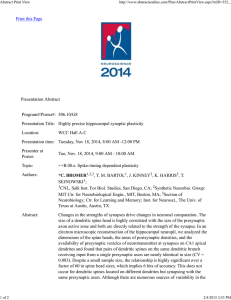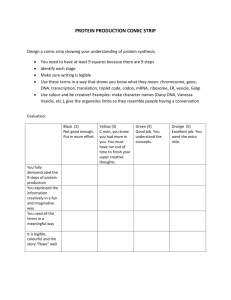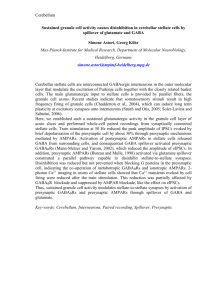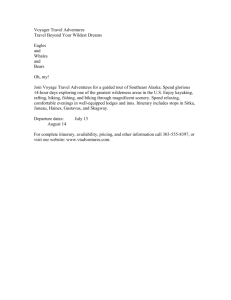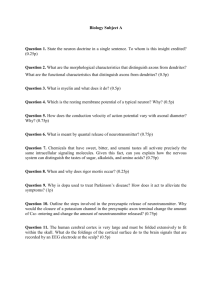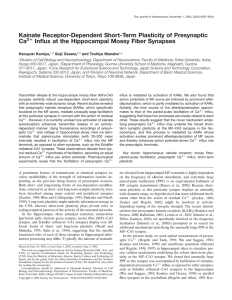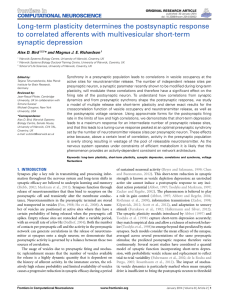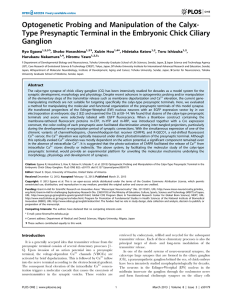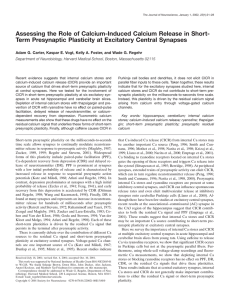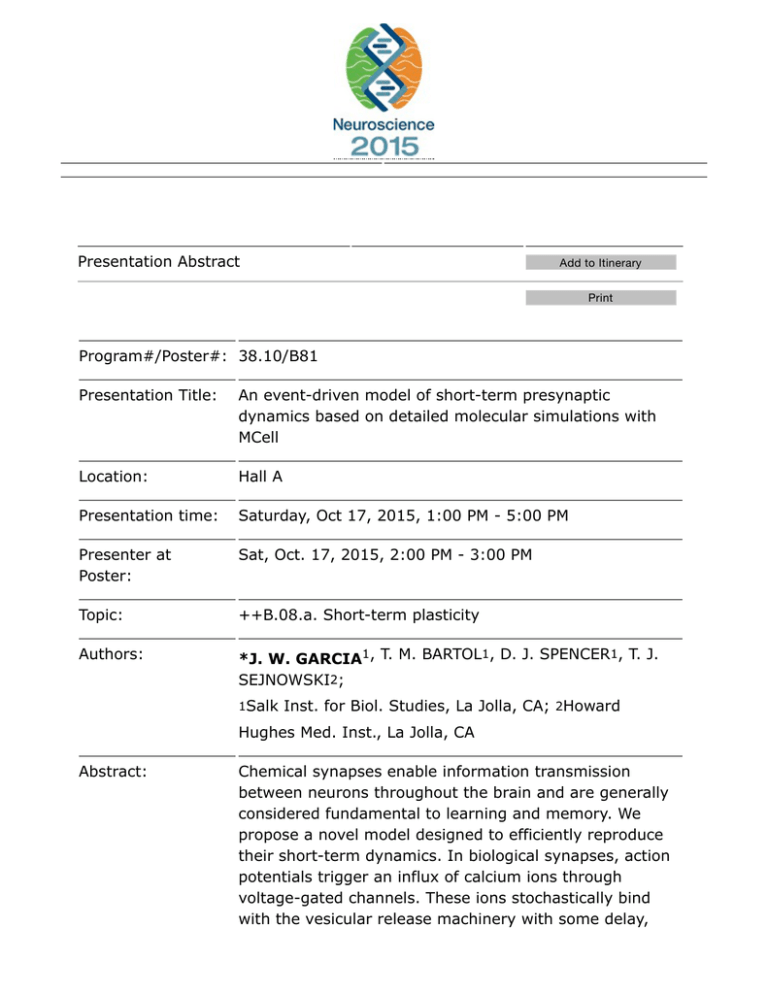
Presentation Abstract
Add to Itinerary
Print
Program#/Poster#: 38.10/B81
Presentation Title:
An event-driven model of short-term presynaptic
dynamics based on detailed molecular simulations with
MCell
Location:
Hall A
Presentation time:
Saturday, Oct 17, 2015, 1:00 PM - 5:00 PM
Presenter at
Poster:
Sat, Oct. 17, 2015, 2:00 PM - 3:00 PM
Topic:
++B.08.a. Short-term plasticity
Authors:
*J. W. GARCIA1, T. M. BARTOL1, D. J. SPENCER1, T. J.
SEJNOWSKI2;
1Salk
Inst. for Biol. Studies, La Jolla, CA; 2Howard
Hughes Med. Inst., La Jolla, CA
Abstract:
Chemical synapses enable information transmission
between neurons throughout the brain and are generally
considered fundamental to learning and memory. We
propose a novel model designed to efficiently reproduce
their short-term dynamics. In biological synapses, action
potentials trigger an influx of calcium ions through
voltage-gated channels. These ions stochastically bind
with the vesicular release machinery with some delay,
causing probabilistic release of neurotransmitter that
occurs asynchronously with incoming spikes. Nonlinear
calcium binding and unbinding kinetics both determine
the timing of neurotransmitter release and enable
facilitation of release probability between spikes, while
depletion of the finite vesicle pool in the presynaptic
space depresses the release probability. Although many
synaptic models implement probabilistic release and
some form of short-term plasticity, most of them do not
take asynchronous release into account. Detailed
molecular models of the presynaptic machinery, on the
other hand, achieve all these features but with huge cost
in computational efficiency. To investigate the
significance of these dynamics in the context of larger
networks, we designed our presynaptic model to capture
the phenomenology of the molecular models while
maintaining the speed and efficiency of the simpler
models. The model achieves both probabilistic,
asynchronous release and facilitation by matching the
release profiles from detailed molecular simulations in
MCell, and the time course for depression is
implemented with exchanges between vesicle pools. The
model treats spikes, releases, and vesicle exchanges as
point events, allowing it to skip over intervening time
without computational overhead by asynchronously
calculating the timing of future events. It thus has
significant advantages in biological realism, efficiency,
and scalability.
Disclosures:
J.W. Garcia: None. T.M. Bartol: None. D.J. Spencer:
None. T.J. Sejnowski: None.
Keyword (s):
PRESYNAPTIC MODELING
SHORT TERM PLASTICITY
VESICLE RELEASE
Support:
NIH P41-GM103712
Howard Hughes Medical Institute
Note: When adding items to your Itinerary, please click "Add Checked Selections to
My Itinerary" on EACH page of your search results.
At the Meeting
Sessions/Events
Abstracts
Registration
Hotel/Travel
Exhibits
Fellowships, Awards, and Prizes
Frequently Asked Questions
CME
Access the SFN Member Center
OASIS Technical Support.
Monday - Friday, 9 am - 5 pm CT
Phone: 1-217-398-1792
Email: OASIS Helpdesk
Leave OASIS Feedback
The Online
Abstract
Submission and
Invitation
System
© 1996 - 2015
Coe-Truman
Technologies,
Inc. All rights
reserved.


